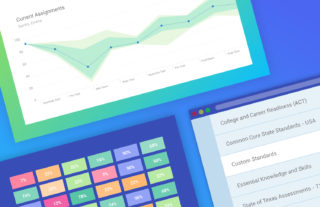What is high-dosage tutoring?


The Covid-19 pandemic caused a massive disruption to the traditional American education system. Students and teachers disappeared from classrooms almost overnight and became reliant on technology to fill in the gaps.
For some schools and communities, this meant deep losses in learning over the ensuing months. As a result, there is a new and growing trend advocating for high-dosage tutoring to help students recover from learning loss.
Unlike traditional tutoring which may happen weekly for an hour or two, high-dosage tutoring is meant to provide more regular, intensive personal instruction. According to Stephen Sawshuk for Education Week, high-dosage tutoring “is defined as one-on-one tutoring or tutoring in very small groups at least three times a week, or for about 50 hours over a semester.”
High-dosage tutoring is not meant for remedial work but it can be an excellent resource for learning acceleration. The intention of this type of tutoring is to provide students with the tools and instruction to build on their skills and knowledge to tackle new learning. Study after study praises the impact of high-dosage learning on student outcomes.
The Thomas B. Fordham institute writes, “nearly 200 research studies [find] that high-dosage tutoring has a far greater effect on math and reading outcomes than even early childhood interventions.”
The personalized learning that can occur in a one-on-one or small group setting is particularly critical in the success of high-dosage tutoring. Because students are working closely with a trained tutor, the tutor is better able to adjust teaching tactics to meet the exact needs of each student. Tutors are also able to foster a close relationship with students which can help put students at ease and increase positive learning outcomes.
For high-dosage tutoring to be successful, several features need to be in place. “High-Dosage Tutoring: A Proven Strategy to Accelerate Student Learning,” by the Office of the State Superintendent of Education in the District of Columbia, notes these features should include setting individualized student goals based on diagnostic data. High-dosage tutoring also needs to take place at least three times per week and should include no more than a 3-to-1 student-to-teacher ratio. Sessions should occur in school and be treated as another class (not an elective) for the entirety of the school year. Lastly, high-dosage tutoring should be provided by a qualified teacher who understands how to align students’ skills to the content being covered in class.
High-dosage tutoring is particularly effective because it’s meant to be accessible to all students. In a report titled “Accelerating Student Learning with High-Dosage Tutoring,” from the Annenberg Institute at Brown University, researchers found “strong evidence that high-dosage tutoring can produce large learning gains for a wide range of students, including those who have fallen behind academically.” What’s more, high-dosage tutoring is effective across multiple disciplines.
High-dosage tutoring has been proven to work well for students at all socio-economic levels and across all grades. It should be seen as an imperative addition to any classroom. As learning losses from the pandemic continue to highlight the inequities of our current education system, high-dosage tutoring can become a game changer. It provides both students and teachers the support they need to be successful.
High-dosage tutoring is emerging as one of the most research-backed strategies to accelerate learning after a year of disruption, especially for those in the most vulnerable populations. As districts look to hire tutors, it’s important to consider how to provide the best support for them. These educators will need to quickly identify learning gaps through fast and frequent formative assessments that provide feedback that supports of a continuous improvement cycle.
Fortunately, high-dosage tutoring and assessment solutions, like GradeCam, qualify for ARPA stimulus funds. So it’s important to reach out to ensure your state is prioritizing this valuable intervention strategy.




